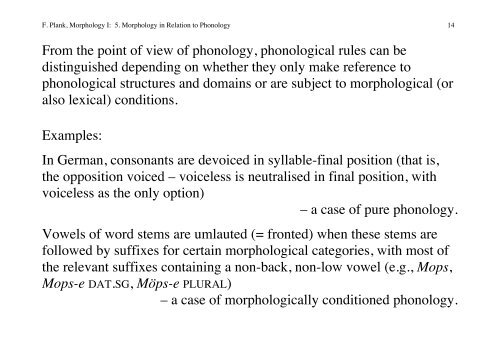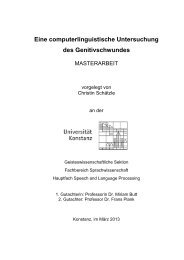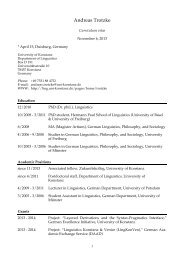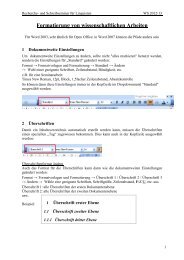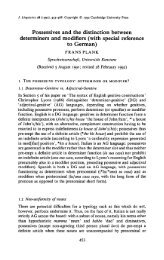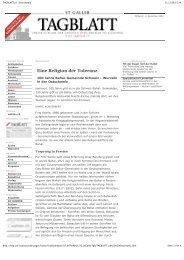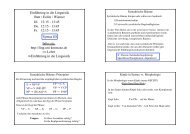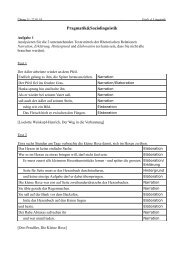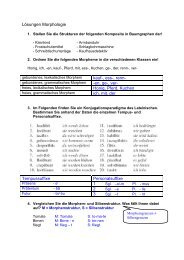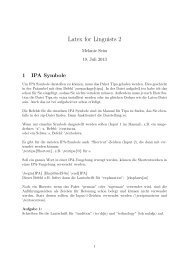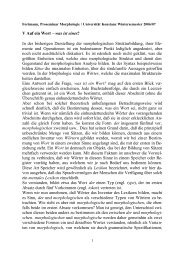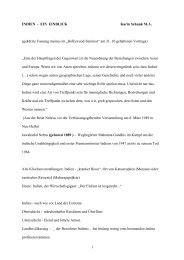5. Morphology in Relation to Phonology
5. Morphology in Relation to Phonology
5. Morphology in Relation to Phonology
You also want an ePaper? Increase the reach of your titles
YUMPU automatically turns print PDFs into web optimized ePapers that Google loves.
F. Plank, <strong>Morphology</strong> I: <strong>5.</strong> <strong>Morphology</strong> <strong>in</strong> <strong>Relation</strong> <strong>to</strong> <strong>Phonology</strong> 14<br />
From the po<strong>in</strong>t of view of phonology, phonological rules can be<br />
dist<strong>in</strong>guished depend<strong>in</strong>g on whether they only make reference <strong>to</strong><br />
phonological structures and doma<strong>in</strong>s or are subject <strong>to</strong> morphological (or<br />
also lexical) conditions.<br />
Examples:<br />
In German, consonants are devoiced <strong>in</strong> syllable-f<strong>in</strong>al position (that is,<br />
the opposition voiced – voiceless is neutralised <strong>in</strong> f<strong>in</strong>al position, with<br />
voiceless as the only option)<br />
– a case of pure phonology.<br />
Vowels of word stems are umlauted (= fronted) when these stems are<br />
followed by suffixes for certa<strong>in</strong> morphological categories, with most of<br />
the relevant suffixes conta<strong>in</strong><strong>in</strong>g a non-back, non-low vowel (e.g., Mops,<br />
Mops-e DAT.SG, Möps-e PLURAL)<br />
– a case of morphologically conditioned phonology.


